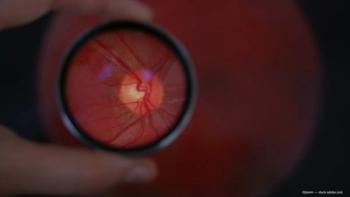
Precise new anterior segment biometry instrument based on partial coherence interferometry
The ACMaster (Carl Zeiss Meditec), a new type of biometry instrument using partial coherence interferometry, offers a precise, easy, and convenient method for measuring intraocular distances in the anterior segment, said Wolfgang Haigis, MD, at the European Society of Cataract and Refractive Surgeons meeting.
ParisThe ACMaster (Carl Zeiss Meditec), a new type of biometry instrument using partial coherence interferometry, offers a precise, easy, and convenient method for measuring intraocular distances in the anterior segment, said Wolfgang Haigis, MD, at the European Society of Cataract and Refractive Surgeons meeting.
In contrast to the IOLMaster, which measures along the visual axis, the ACMaster can obtain segmental measurements of the cornea, anterior chamber, and lens by measuring along the optical axis.
"This method promises to be of major benefit in refractive surgery, IOL design, and accommodative research," said Dr. Haigis, University Clinic Wurzburg, Germany.
Dr. Haigis presented his experience acquired with prototypes of the novel technology during the past year. His studies included normal phakic eyes, pseudophakic eyes, and eyes that had undergone refractive surgery with phakic IOL implantation. Measurements obtained included central and peripheral corneal thickness, anterior chamber depth, lens thickness, retrolenticular gaps in pseudophakic eyes, and accommodation-related dimensional changes.
Reproducibility was high whether measuring corneal thickness (1.8 µm), anterior chamber depth (4.8 µm), or lens thickness (5 µm). Based on measurements of the anterior chamber depth, mean interobserver variability was only 4.7 µm and mean intraobserver variability was 6.1 µm.
"With this system, we are approaching physiological limits of accuracy," Dr. Haigis said.
He reported that corneal thicknesses measured with the ACMaster correlated strongly with results obtained using conventional ultrasound. In addition, he demonstrated that measurements taken during accommodation showed a similar change in anterior chamber depth in phakic and pseudophakic eyes (338 versus 365 µm, respectively).
Dr. Haigis is a consultant to Zeiss Meditec, but has no financial interest in this technology.
Newsletter
Don’t miss out—get Ophthalmology Times updates on the latest clinical advancements and expert interviews, straight to your inbox.









































